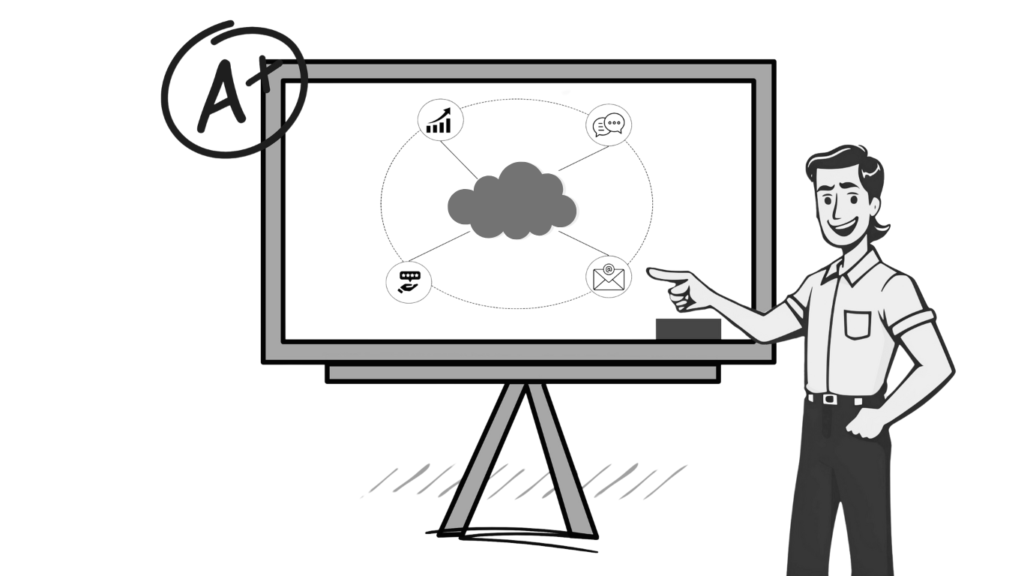How well do you know your pipeline?
Salesforce can revolutionize your opportunity management, but many business leaders struggle to harness its full potential. One of the most fascinating projects I took part in was the re-designing of the sales process and the opportunity stages that defined it. In this comprehensive guide, we’ll get into the specifics of the steps I took to gather requirements, define opportunity stages, and ensure user adoption. I’m also sharing a deployment checklist for configuring Salesforce.
The Challenge
Why should you care about better defining Opportunity stages and the sales process? Here’s a closer look at the problems for the sales organization caused by an unclear sales process in Salesforce.
Lack of Structure:
When opportunity stages aren’t clearly defined, it opens up room for creativity. Every team member might track progress differently which leads to confusion, miscommunication, and inconsistent reporting.
Missing Context:
What does each of your stages really mean? What is happening during the sales cycle? If you can’t report on these questions, this is a sign that you need to revisit your definitions.
Inaccurate Forecasting:
Without a reliable definition of sales stages, forecasting becomes a challenging task. Businesses need a system to predict revenue, identify gaps, and allocate resources efficiently.
Scalability:
A clearly defined sales process is the first step to succeeding at scale. Be able to understand what needs to happen for an opportunity to close, and adapt it across the entire sales team.
Five Steps to Revamping the Sales Process
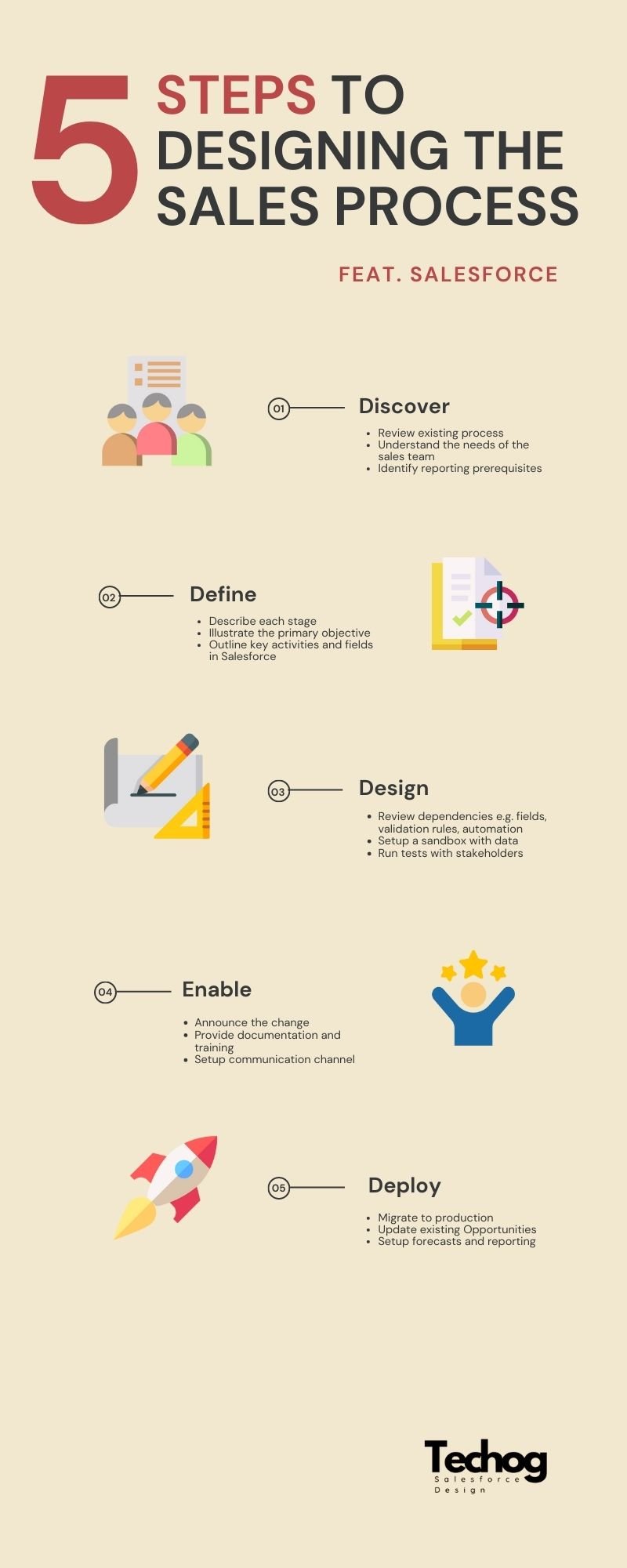
1. Discover: Gathering Requirements for Success
The first of this transformative journey is to map out the current state. Spend the time to analyze your current pipeline and outline the unique needs of your organization. This step allows you to keep what’s working and leave behind the rest. If you aren’t sure where to start, I recommend the tactics below:
Run Opportunity History Reports:
If you aren’t familiar, history reports allow users to report on all the changes that have been made to the Opportunities. It’s a great way to identify trends and track activity on the Opportunity record. Refer to this Salesforce article for more information on how to set up this report.
Start by answering these questions:
What stages are most and least frequently used?
How many days are spent in each stage and what’s their proportion to the days to close?
What is the close rate of each stage?
Collect Existing Reports:
Understand what key metrics and insights management needs from the opportunity stages. This ensures your design aligns with the higher-level goals of the organization.
Shadow Your Top Sales Rep:
Learn from your best. Observe how your top sales rep progresses through the opportunity stages. This real-world insight can help you fine-tune your design for maximum effectiveness.
Start documentation:
Use Excel, a Lucid Chart, or your tool of choice to start documenting the sales stage definitions. Get organized and share with the business leaders for feedback.
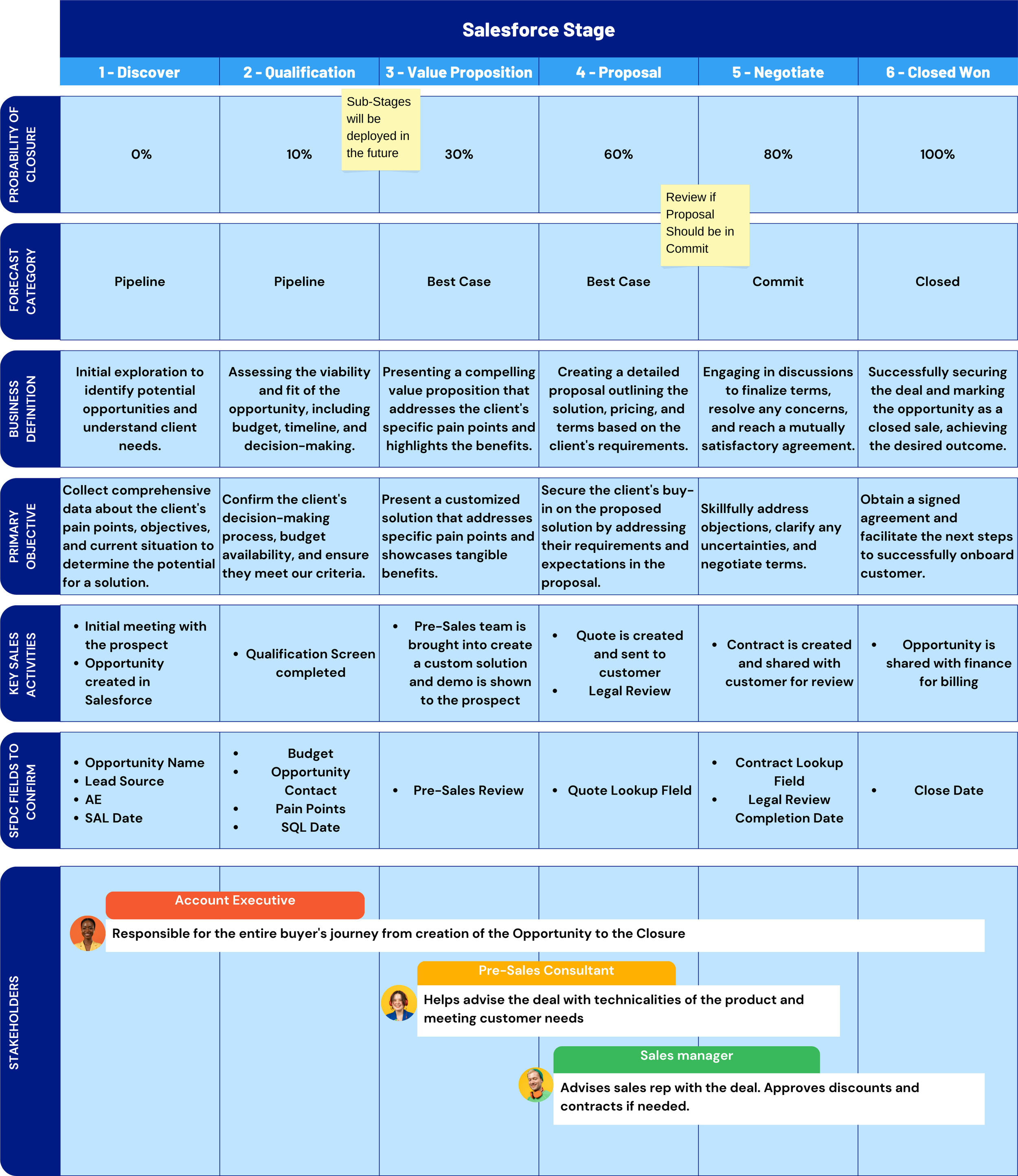
Collaborate to define requirements and outline Opportunity stages in a shared documentation
Desired Outcome:
- Outline of all stages to be included in the new Sales Process
- Optional: Assign numbers to each stage. Numbers provide a clear progression path and help prevent ambiguity.
- Example: 1 – Discovery, 2 – Qualification, 3 – Proposal
- Optional: Assign numbers to each stage. Numbers provide a clear progression path and help prevent ambiguity.
- Defined Forecast Category for each stage
- Defined Probability of Closure for each stage
2. Define: Building the Foundation
With requirements in hand, it’s time to craft your opportunity stages with precision:
Gather Requirements and Collaborate:
Speak with the right stakeholders to ensure that everything is included in the sales process documentation that was created earlier. Hold workshops, have meetings, and start a communication channel for successful collaboration.
Milestone-Based Approach:
Avoid relying on intuition. I recommend thinking of opportunity stages as actionable milestones of the sales process. Explore utilizing a structured framework like MEDDICC to guide your stage definitions.
Primary Objectives:
Define the specific goals that must be achieved to move an opportunity to the next stage.
Key Sales Activities in Salesforce:
Outline the critical actions that must occur within Salesforce to progress an opportunity from one stage to another. This ensures accurate tracking and effective use of the platform.
Desired Outcome:
- Completed documentation of the sales process and its opportunity stages
- Identified required fields and key Salesforce activities to be tracked
3. Design: A Deployment Checklist
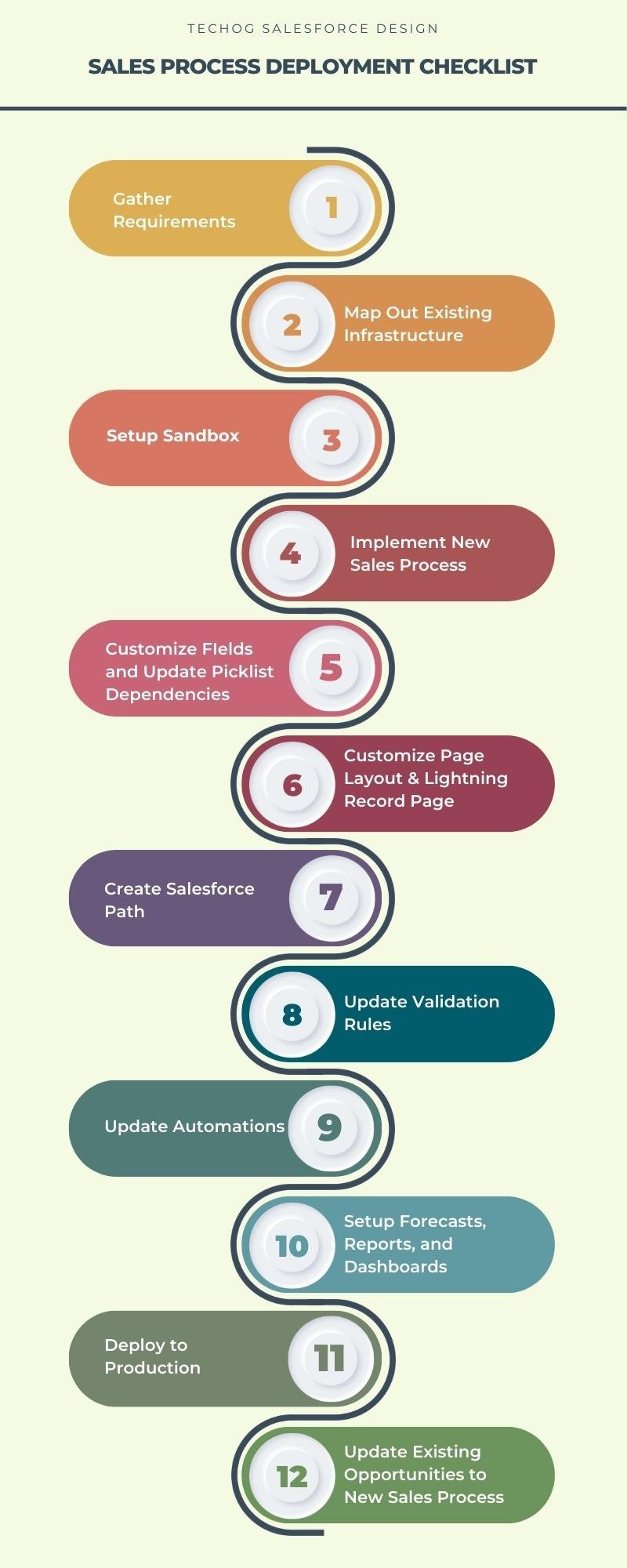
Desired Outcome:
- Development work in the sandbox. Some areas to configure:
- Opportunity Stages
- Validation Rules
- Automation (Flows, Email Alerts, etc.)
- Integrations
- Page Layouts
- Successful user acceptance testing
4. Enable: Preparing Your Team for Change
User adoption starts before deployment. Ensure people are aware, ready, and enabled for any upcoming changes. Consider these strategies:
Early Announcement:
Inform your team about the upcoming changes well in advance. This allows time for adjustment and minimizes disruption.
Timing Matters:
Avoid implementing changes at the end of a month, quarter, or fiscal year. These are crucial reporting periods, and a change in opportunity stages could impact your data.
Mass Updates:
Where possible, apply mass updates to existing opportunities to avoid data discrepancy and save time. However, it may be a better idea for opportunity owners to review each deal and update them manually. The owners will have more context to evaluate the opportunities against the new criteria.
Training and Documentation:
Provide comprehensive documentation and conduct training workshops. This also opens up the floor for last-minute feedback.
Desired Outcome:
- Full transparency on change
- Minimal disruption
- Successful enablement
5. Deploy: A Successful Launch
Finally, it’s time to take your newly crafted opportunity stages live:
Execute the Deployment: Roll out your new opportunity stages in the production environment, ensuring all aspects are correctly configured. Do this overnight instead of working hours to minimize disruption.
Monitor and Fine-Tune: Keep a close eye on how the new stages perform in real-world scenarios. Be prepared to fine-tune based on actual usage and feedback.
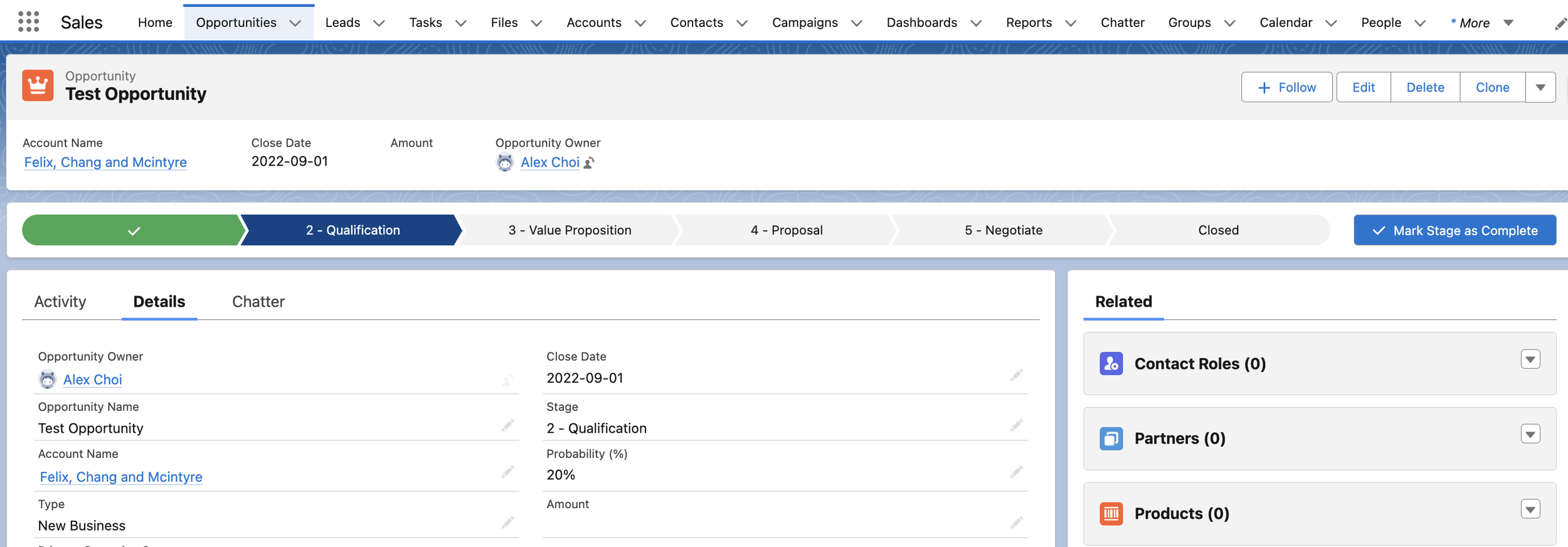
Desired Outcome:
- A clear understanding of the new sales process
- Meaningful definition of opportunity stages
- Accurate forecasting
Conclusion
It’s time to redefine opportunity management in Salesforce. Whether you’re just getting started with setting up the sales process or a business that needs a revamp, this guide can help achieve your goals. Empower your team, streamline your processes, and unlock the full potential of Salesforce’s opportunity stages. Follow us on LinkedIn and connect with me for more content!



